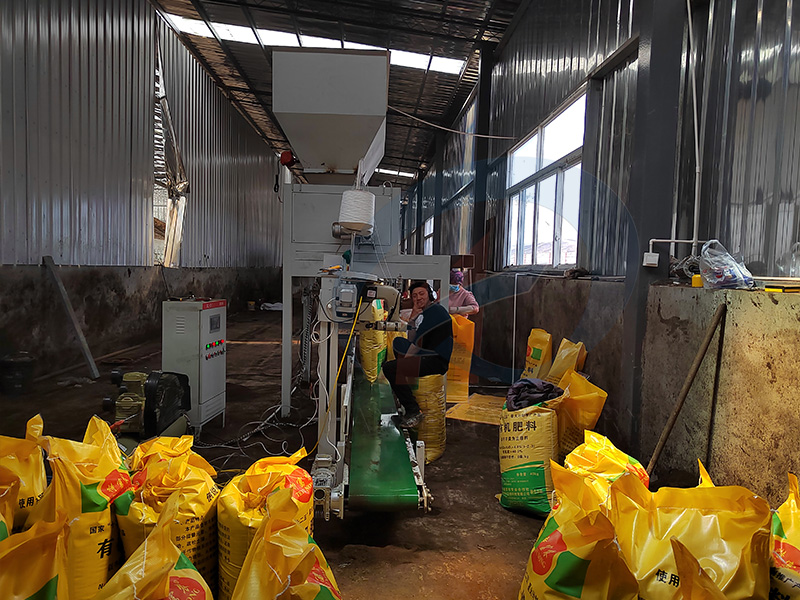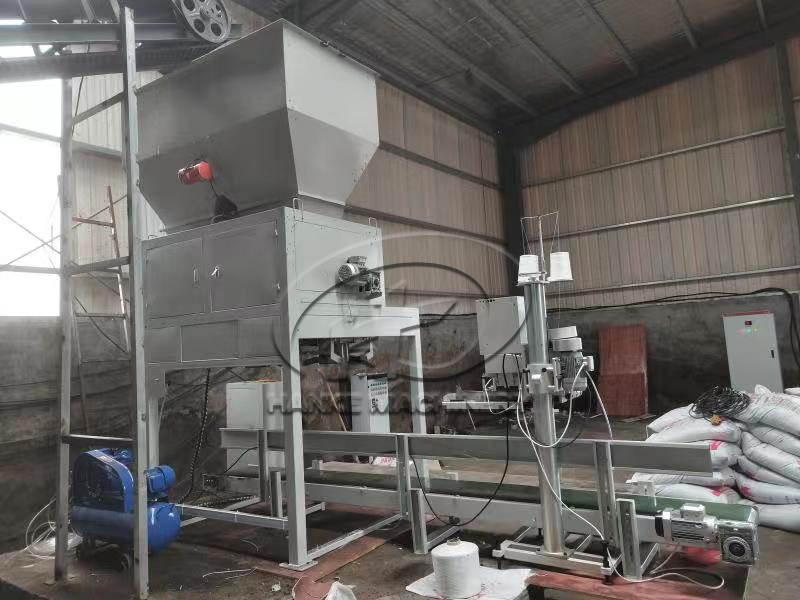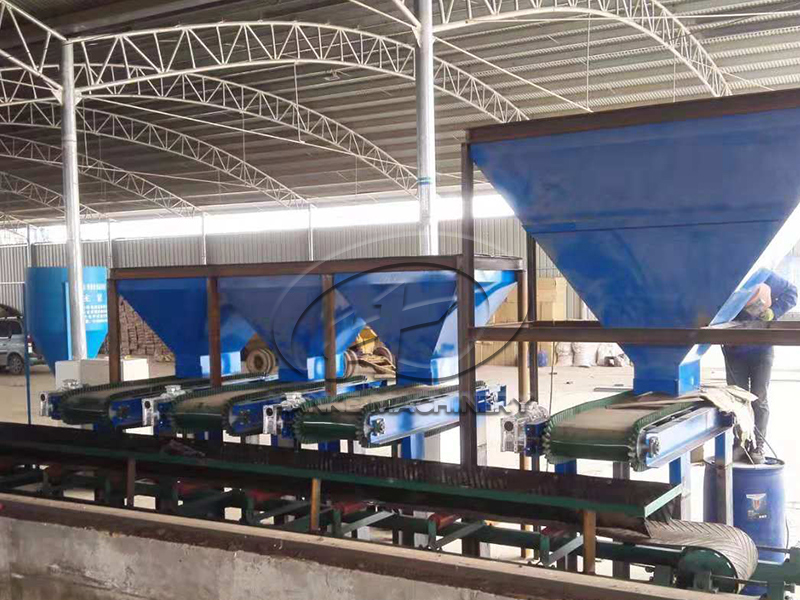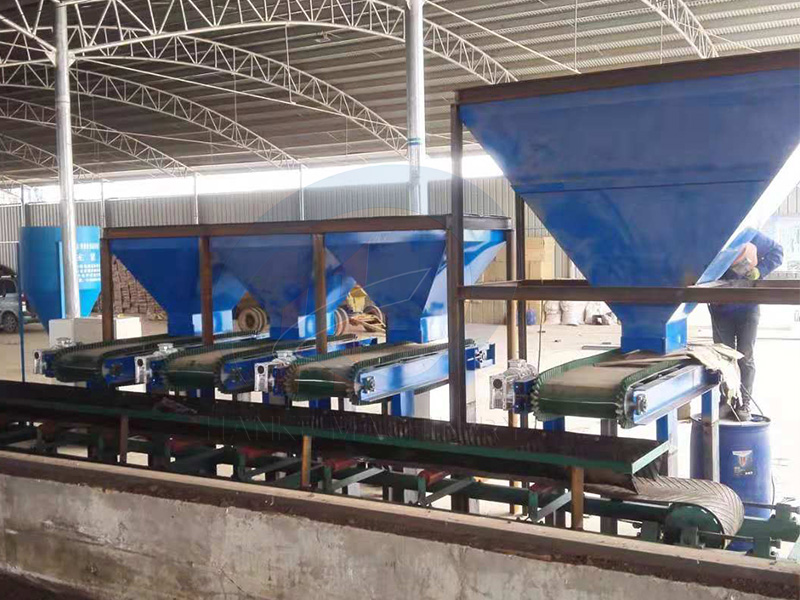 HOME > News > Industry News > When performing regular maintenance on dry powder mortar packaging machines, which aspects should be
HOME > News > Industry News > When performing regular maintenance on dry powder mortar packaging machines, which aspects should be Update time : 2025-08-26 Publisher:Zhengzhou Hanke Machinery
In the regular maintenance of dry powder mortar packaging machines, it is necessary to focus on three major dimensions: core functional components (ensuring packaging accuracy), easily worn parts (affecting operational stability), and safety auxiliary systems (preventing fault expansion). Combined with the operational characteristics of the equipment (high dust levels and material prone to clumping), targeted inspections should be carried out. The following are the key aspects that need to be emphasized, classified and sorted by maintenance cycle to ensure coverage of the critical operational links of the equipment:
I. Weekly Regular Maintenance: Focus on "Preventing Clogging and Ensuring Smooth Flow", addressing issues of dust and material residue.
Dry-mixed mortar is prone to dust and residue buildup, and it is necessary to focus on cleaning and inspecting the components that come into direct contact with the material every week to prevent blockages that could lead to uneven feeding or equipment jamming.
Dust removal system: Core checks "filtering efficiency" and "air pressure stability"
Pay special attention to the condition of the filter element / filter bag: After disassembly, check the surface for dust clumps or damage. If there are holes in the paper filter element, it must be replaced immediately. If the fabric bag becomes hard and clumpy, it should be washed with water and dried. If its filtering performance cannot be restored, it should be replaced.
Test the jet effect of the pulse valve: After starting the machine, observe whether the pulse valve sprays air at the scheduled time (generally every 10 to 30 seconds). Use a pressure gauge to check the air pressure of the dust removal system (normal range: 0.5 to 0.6 MPa). If the air pressure is insufficient or the jet is weak, check whether the air pipe is leaking or the solenoid valve is blocked.
Empty the dust collection hopper: Clear out the accumulated dust in the hopper to prevent excessive build-up from flowing back into the equipment. At the same time, check the sealing of the hopper to prevent dust from spilling out and polluting the environment.
Screw feeder: Focus on checking "blade wear" and "inner wall cleanliness"
Disassemble the spiral blades and check whether there is any wear or deformation on the blade edges. (If the wear exceeds 2mm, it will cause an increase in the deviation of the feeding amount and the blades need to be replaced.)
Clean the hardened material remaining on the inner wall of the feeder (scrape it off gently with a soft spatula; do not strike the inner wall with hard objects to avoid scratching and leaving more material behind).
Check whether the connecting bolts between the blade and the shaft are loose (dust vibration can easily cause the bolts to loosen. If any looseness is found, use a torque wrench to tighten them according to the torque specified in the manual to prevent blade offset and jamming).

II. Monthly Regular Maintenance: Focusing on "Maintaining Precision and Preventing Failures", calibration of core component performance and electrical inspection.
Each month, a thorough inspection should be carried out on the key components that affect packaging accuracy (the weighing system) and the electrical systems prone to failure to prevent minor issues from accumulating into major malfunctions.
Weighing system: Core inspection "Accuracy calibration" and "Sensor protection"
Calibration accuracy with standard weights: Load 50% and 100% of the rated packaging weight of the equipment (such as 25kg/50kg) with weights, observe the error between the displayed weighing value and the actual weight (which should be ≤±0.2%). If the error exceeds the limit, adjust the calibration parameters according to the manual. If the error still exceeds the limit after adjustment, check whether the sensor is offset or damaged.
Check the sensor status: Observe whether the sensor connection wires are damaged or oxidized (dust can easily cause rust on the terminal, and it needs to be wiped clean with alcohol), and whether the sensor protective housing is intact (if the housing is damaged, materials can easily enter the sensor interior, causing signal drift or component damage).
Check the levelness of the weighing platform: Use a level to detect whether the weighing platform is level (if it is tilted, it will cause uneven force distribution during weighing and increase the error). The bottom support feet need to be adjusted to ensure that the platform is parallel to the ground.
Electrical control system: Focus on checking "dust protection" and "component status"
Open the electrical cabinet and use compressed air (with a pressure of no more than 0.4 MPa to avoid damaging the circuit board) to blow away the dust inside the cabinet (accumulated dust can easily cause short circuits in the circuit board and oxidation of the contactor contacts).
Check the contacts of the contactor and relay: Observe whether there are signs of erosion or blackening on the contacts. If the oxidation is severe, gently sand it with fine sandpaper. If the contacts are dented or burned through, replace them immediately to prevent the contacts from sticking together and causing the motor to lose control.
Test the control panel functions: Press each button (start, stop, emergency stop, calibration) one by one, and check if the indicator lights are on properly and if the equipment operates as instructed. If a button does not respond, check if the wiring is loose or if there is poor contact inside the button.
III. Regular Maintenance Every Quarter: Focus on "Strong Drive and Confidential Sealing" to Address Wear and Aging Issues Caused by Long-Term Operation
A thorough inspection of the transmission system (power core) and pneumatic/sealing components (auxiliary operation key) is required every quarter to extend the lifespan of core components and prevent unexpected shutdowns.
Transmission system: Focus on checking the "degree of wear" and "lubrication status"
Conveyor belt / Drive chain: After disassembly, thoroughly clean the surface dust and oil stains. Check if the chain pins are worn and if there are any cracks on the surface of the conveyor belt (if there is local damage on the conveyor belt, it needs to be cut and repaired or replaced to prevent material leakage). When re-lubricating, apply lithium-based grease (liquid oil is prohibited to prevent dust adsorption and blockage). After lubrication, test the chain tension (press the chain by hand, a sag of no more than 10mm is appropriate. If it is too loose, it will slip; if it is too tight, it will wear the bearings).
Motors and reducers: Touch the bearings of the running motor by hand. If the temperature exceeds 60℃ (normal ≤ 55℃), it indicates severe wear of the bearings and the bearings of the same model need to be disassembled and replaced. Check the oil level of the reducer (observed through the oil gauge, the oil level should be between the "maximum" and "minimum" marks). If the oil level is insufficient or the oil becomes cloudy, the old oil should be drained and the gear oil specified in the equipment manual should be replenished (such as L-CKD320 heavy-duty industrial gear oil).
Coupling: Check whether there is any offset between the motor and the reducer, and whether the buffer pad is aged. (If the buffer pad is cracked, it needs to be replaced with a buffer pad of the same specification to avoid abnormal noise or vibration during operation and affect the stability of the equipment.)
Pneumatic and sealing components: Focus on checking "sealing performance" and "component aging"
Cylinders and pneumatic components: Check whether the piston rod of the cylinder has any scratches or air leakage. (If there is rust on the piston rod or bubbles at the sealing ring, the cylinder sealing ring needs to be replaced to avoid insufficient air pressure causing the clamping device to fail to firmly hold the packaging bag.)
Pneumatic three-piece set (filter, pressure reducing valve, oil mist lubricator): Open the drain valve of the filter to discharge the accumulated water inside (to prevent water from entering the cylinder and causing the piston rod to rust); Check if the pressure of the pressure reducing valve is stable (normal range: 0.4 - 0.5 MPa). If the pressure fluctuates, adjust the knob and tighten it; Add pneumatic special oil to the oil mist lubricator (fill the oil to 1/2 - 2/3 of the oil gauge to avoid cylinder wear due to lack of oil lubrication).
Equipment Seals: Inspect whether the sealing gasket between the hopper and the feeder and the sealing rubber ring between the filling port and the packaging bag are aged or deformed. (If cracks or elasticity reduction occur, replace them with the same specification seals to prevent dust leakage or material leakage that may contaminate the equipment.)
IV. Key Points for Regular Maintenance
1. Spare parts compatibility: When replacing consumable parts (such as spiral blades, weighing sensors, and filter elements), only original spare parts that match the equipment model must be used (sensors from different manufacturers may have incompatible accuracy, and blade sizes may not be compatible; mixed use may lead to decreased accuracy or component jamming).
2. Operational Safety: All inspections must be carried out after the equipment is shut down, power and gas supply are cut off (especially for the electrical cabinet and weighing sensors, live operation is strictly prohibited); when disassembling heavy components (such as the screw shaft and motor), lifting equipment should be used for assistance to prevent damage to the equipment or injury to personnel.
3. Record Keeping and Traceability: Establish and maintain a maintenance logbook, detailing the time of each inspection, the status of components, calibration data, and the model of replaced spare parts (e.g., "2024.XX.XX, weighing sensor calibration error 0.1%, within requirements; dust filter element replaced, model XXX"), to facilitate subsequent tracing of the cause of faults.
Through the above regular key inspections, faults caused by "dust blockage, component wear and precision drift" of the dry powder mortar packaging machine can be effectively avoided, ensuring the long-term stable operation of the equipment. At the same time, the packaging accuracy error can be controlled within ±0.5%, reducing production losses.

see details +

see details +

see details +

see details +

 Tel:+86 17319777703
Tel:+86 17319777703
 E-mail:hkautomaticpack@foxmail.com
E-mail:hkautomaticpack@foxmail.com
 Address:Xingyang City, Zhengzhou City, Henan Province.
Address:Xingyang City, Zhengzhou City, Henan Province.
Privacy Policy Copyright © Zhengzhou Hanke Machinery Equipment Co., Ltd Co., Ltd.